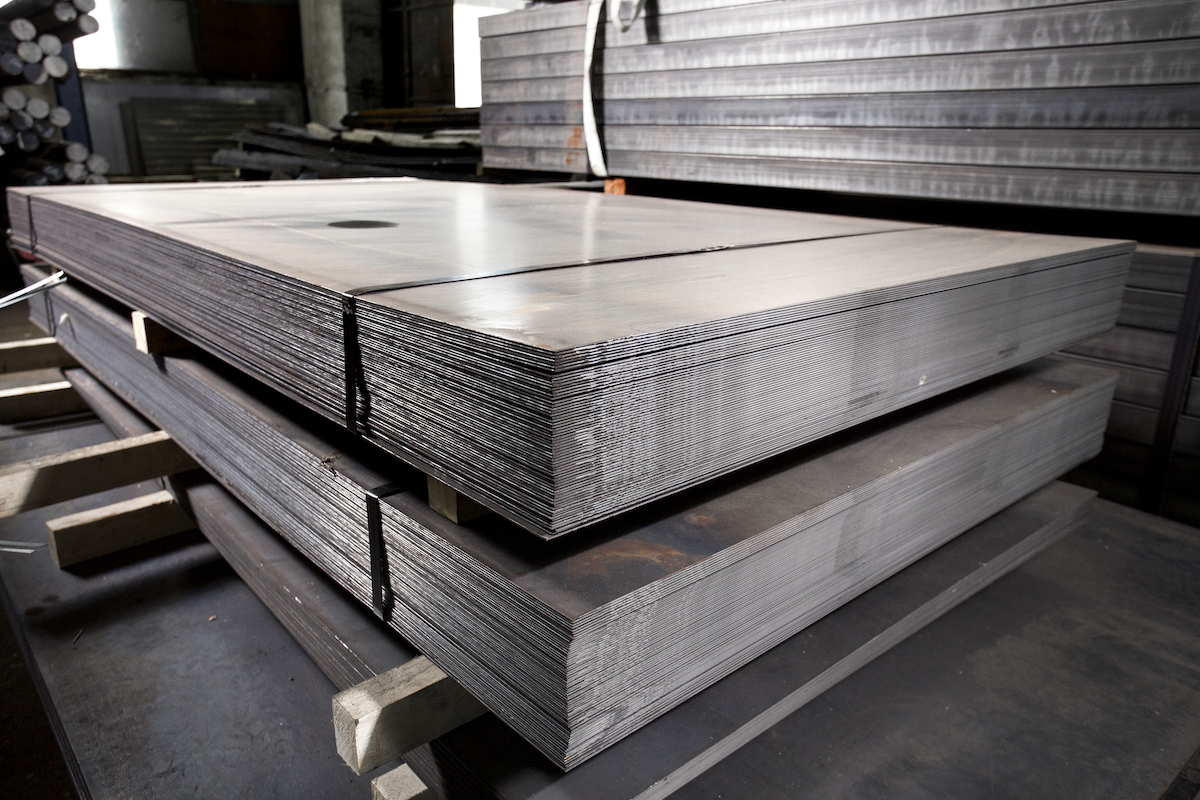How Volatile Steel Prices Impact Metal Fabrication Projects

A pandemic, inflation, supply chain disruption, global uncertainty, tariffs, trade wars, political unrest and a host of other factors have led to significant volatility in steel and aluminum markets in the last two years. Combined with pent up demand, metal prices have soared to near record highs, creating major challenges.
The metal fabrication industry, in particular, felt the brunt of steel and aluminum market volatility as it attempted to mitigate rising prices while fulfilling their contractual obligations to customers.
Here, we’ll take a look at where steel, stainless steel, and aluminum markets have been and forecasts on where they’re going, along with their impacts on metal fabrication for commercial and defense industry applications.
Steel Markets at a Glance
Pre-pandemic pricing for the American Steel Index hovered around $1,000 per ton, dropping quickly to a low around $600 in April 2020 as COVID-19 shut down industries. It didn’t take long for prices to begin their ascent, however, tripling to reach their peak at just shy of $1,900 in May and August 2021. For the last quarter of 2021 and beginning of 2022, prices have ebbed and flowed slightly below that.
Stainless steel is more costly than standard steel and has seen similar volatility. Some forecasts for 2022 are cautiously optimistic, suggesting that pricing may lower. However, others suggest that prices will remain elevated as the pandemic drags on. If prices do come down, it will likely be more slowly than they rose.
Historically, the sky-high pricing we’re seeing today hasn't topped its all-time high from a little more than a decade ago when steel prices exceeded $2,100 in early 2011, brought on by natural disasters and other factors that disrupted supplies.
NYSE American Steel Index
Source: MarketWatch
Aluminum Markets at a Glance
If you thought steel was expensive, aluminum prices topped $3,100 per ton in January 2022, twice what they were in April 2020 at the onset of the pandemic. This unprecedented spike in aluminum prices has sent the cost of everything from beer cans and solar panels to complex metal fabrications upward.
Like steel, supply chain disruption is helping to drive up costs. Numerous other factors are influencing aluminum markets, too, in particular, the demand for low-carbon energy sources which require lightweight materials.
Unfortunately, forecasts for aluminum pricing show little signs of returning to their pre-pandemic levels and will likely remain steady or potentially inch upward in the foreseeable future.
Aluminum Pricing Per Ton
Source: Trading Economics
Addressing High Metal Prices in Metal Fabrication
Manufacturing industries that rely on steel, stainless steel, and aluminum for their livelihoods have had to face some harsh realities as they try to absorb costs. Inevitably, rising costs will be reflected in bids and pricing.
Those who rely on commodity offshore metals face even greater challenges than those who perform work in compliance with NAVSEA’s “buy American” clause which dictates the use of domestic materials. Granted, domestic prices are elevated, too, but at least there is the likelihood of fewer material procurement issues.
It’s important to keep in mind that there are many factors that influence metal fabrication costs. Materials are just one of them. Labor, certification requirements, finishing, and delivery are a few of note. Procurement officers and engineers can address some cost concerns by taking a strategic approach to their product specifications, drawings, and purchase orders. Often, it’s the costs associated with the complexity of a project that surprisingly rival material prices. To combat potentially higher project costs requires addressing overengineering and ultra-high tolerances where they might not be needed.
There isn’t a single metal fabricator across the country who isn’t being challenged by significantly higher material prices. Working with a company that has a proven track record becomes more important than ever. Also important is the role that the metal fabricator and its team of engineers play in reviewing technical data, talking through questions, engaging in a DfM review, and strategizing ways to streamline the project.
These types of value-added services demonstrate that there’s more to choosing a metal fabrication partner than price. If you’re concerned about the high cost of steel and other metals used in metal fabrication, we’re happy to talk through how it will impact your specific project. Contact the metal fabrication experts at Fox Valley Metal-Tech today.
Also download our RFQ checklist below to help you outline your needs for your next project.
